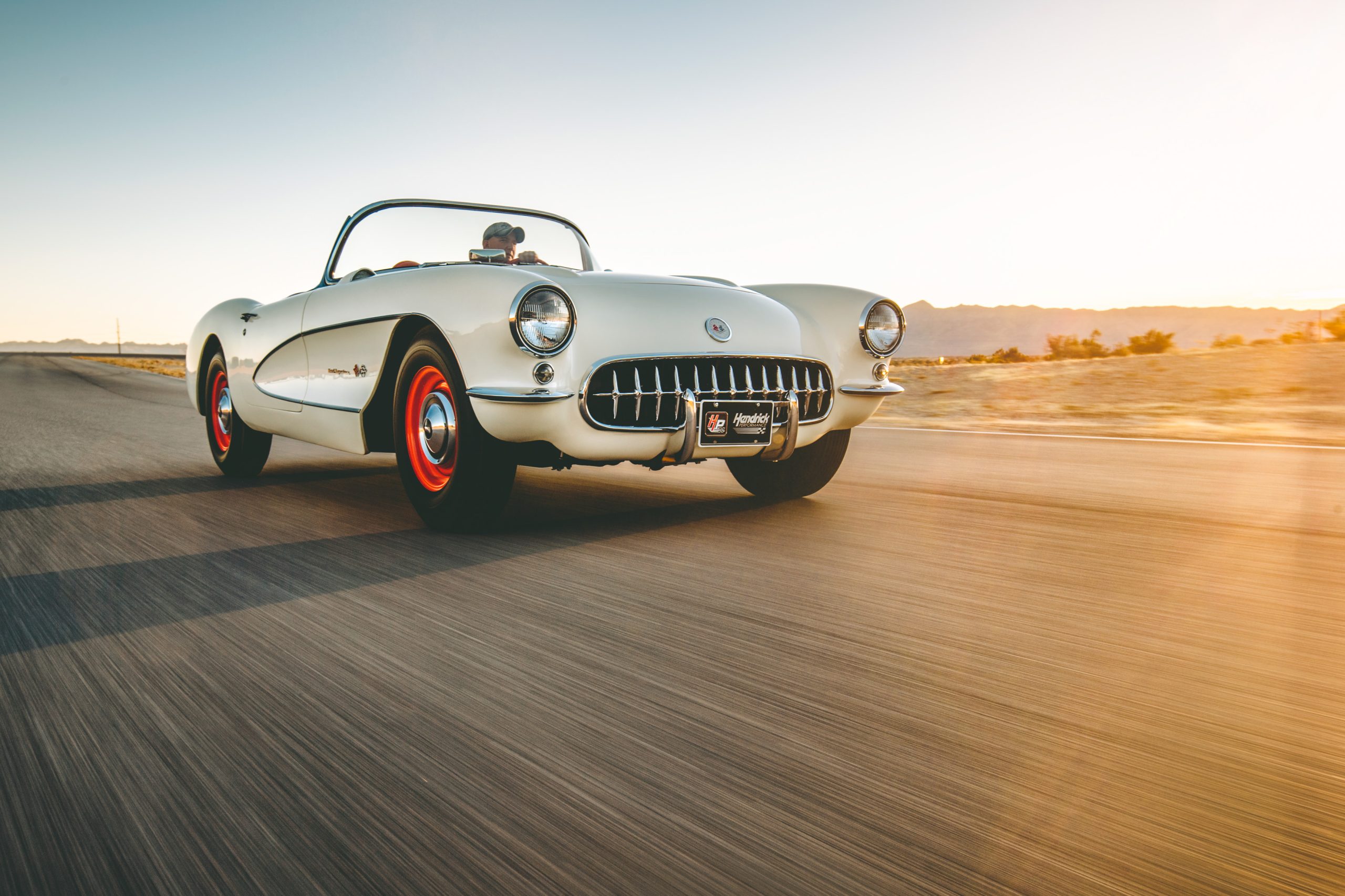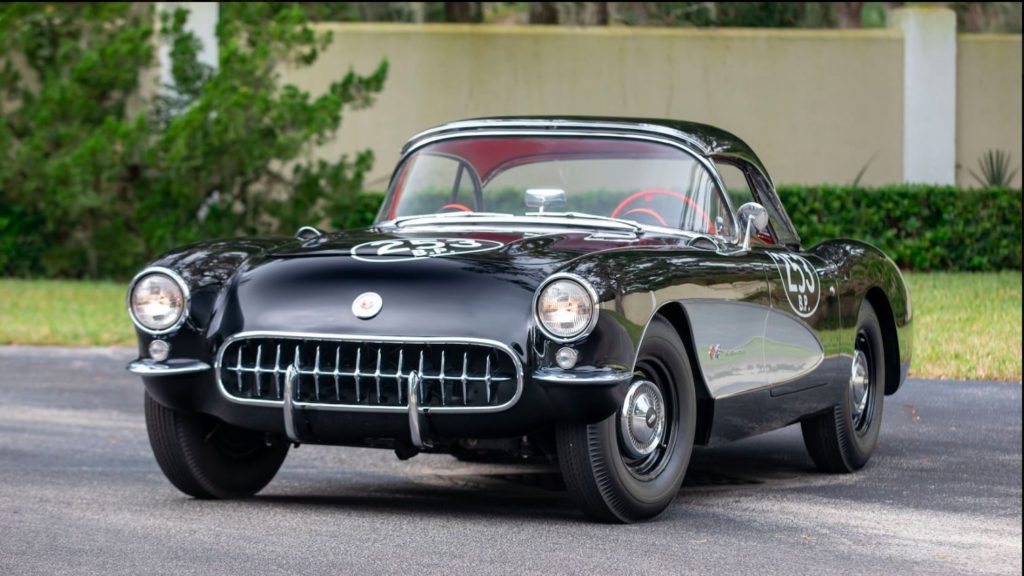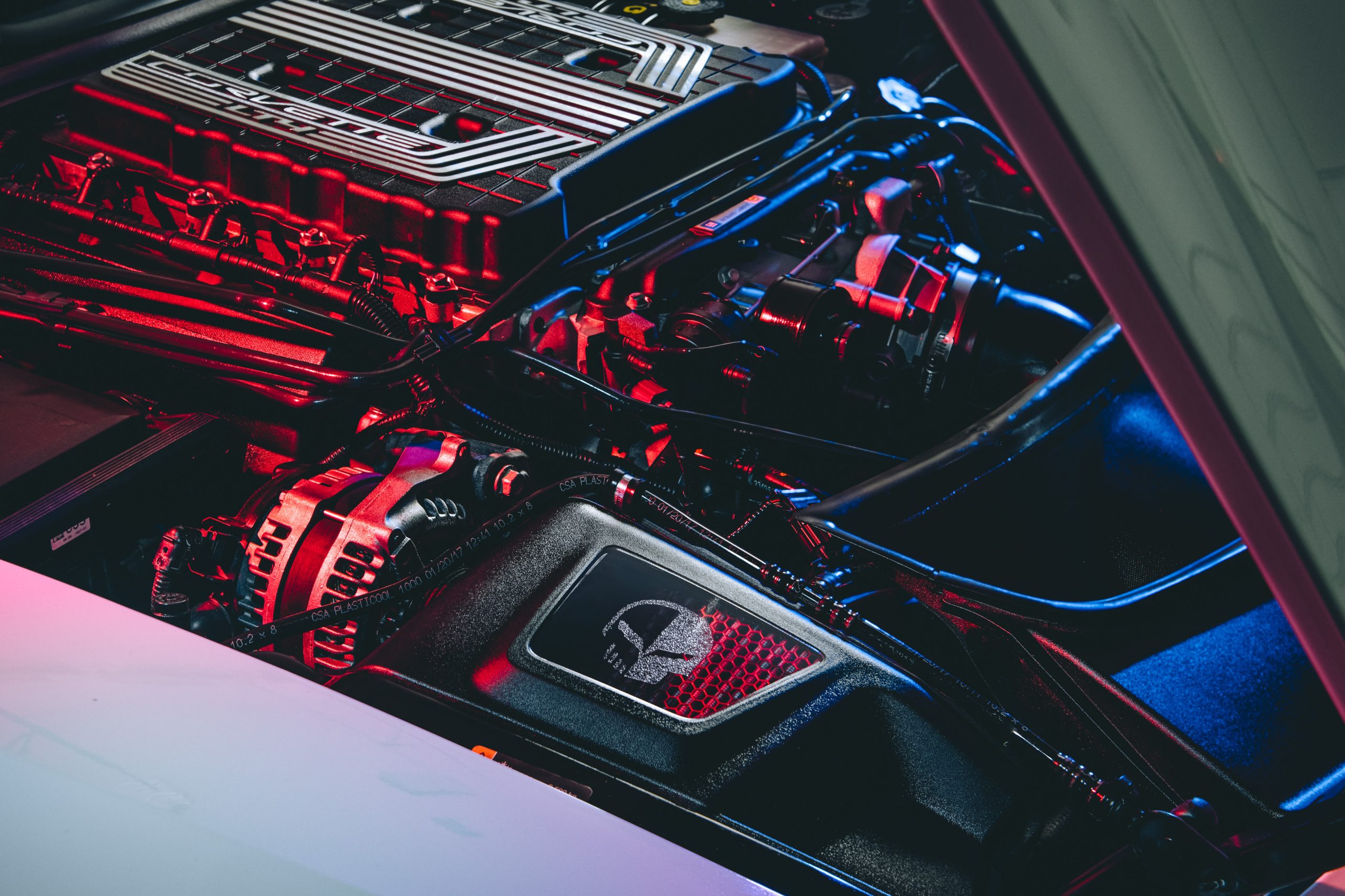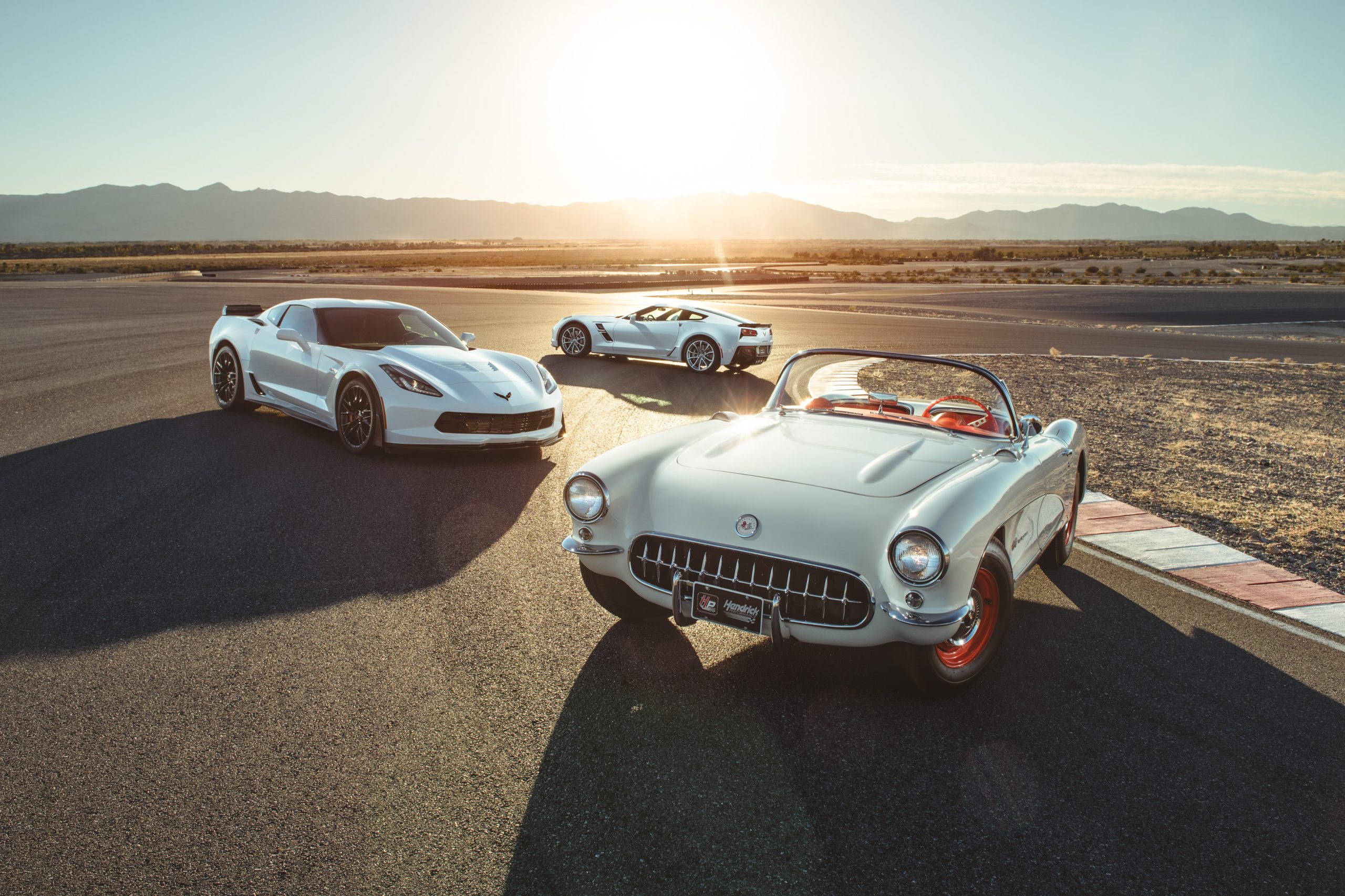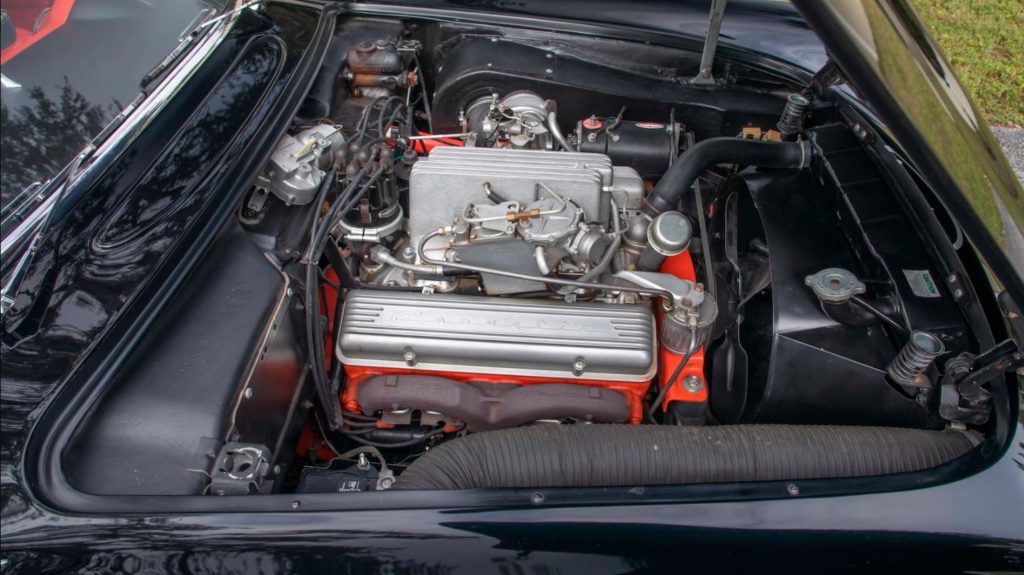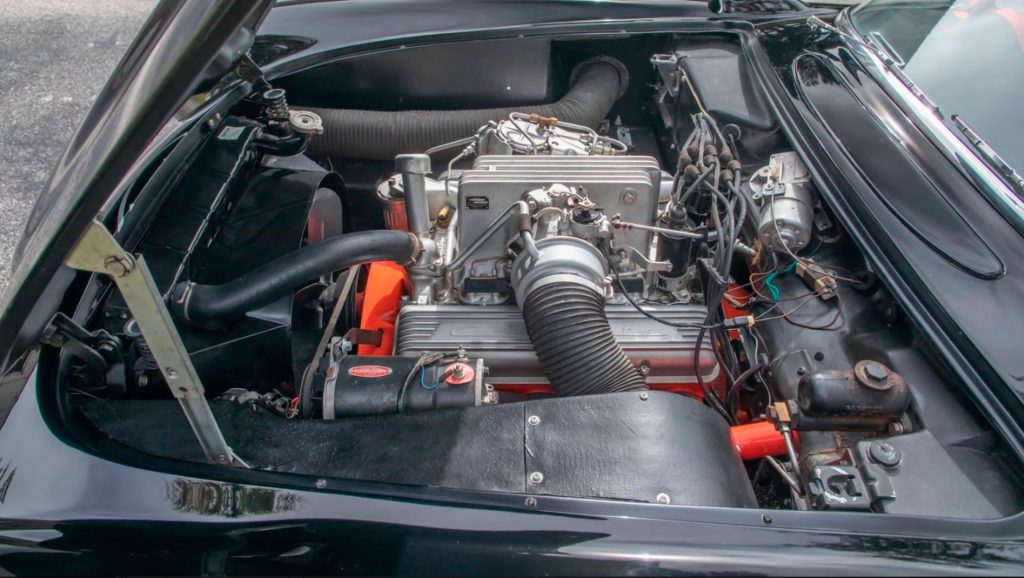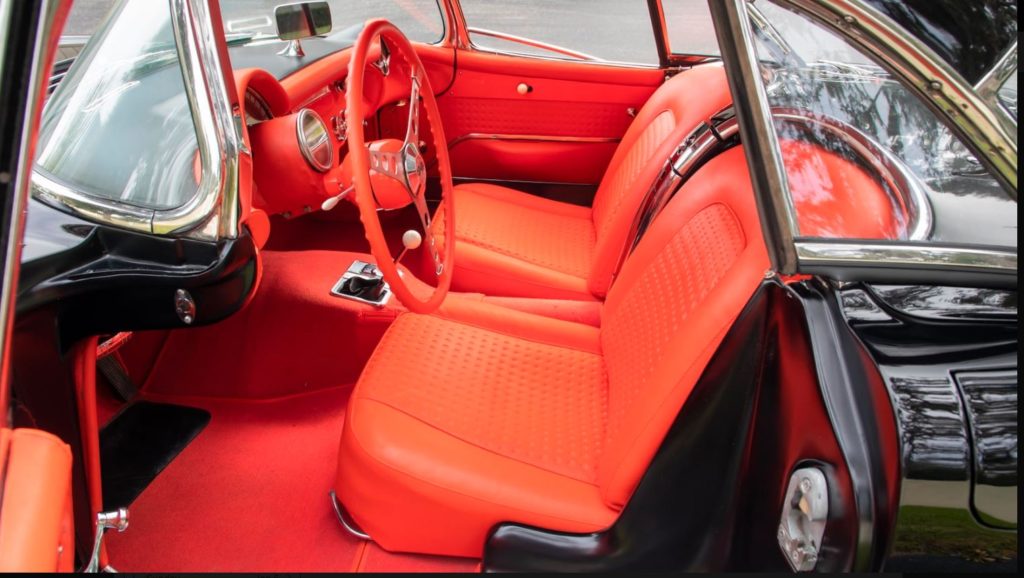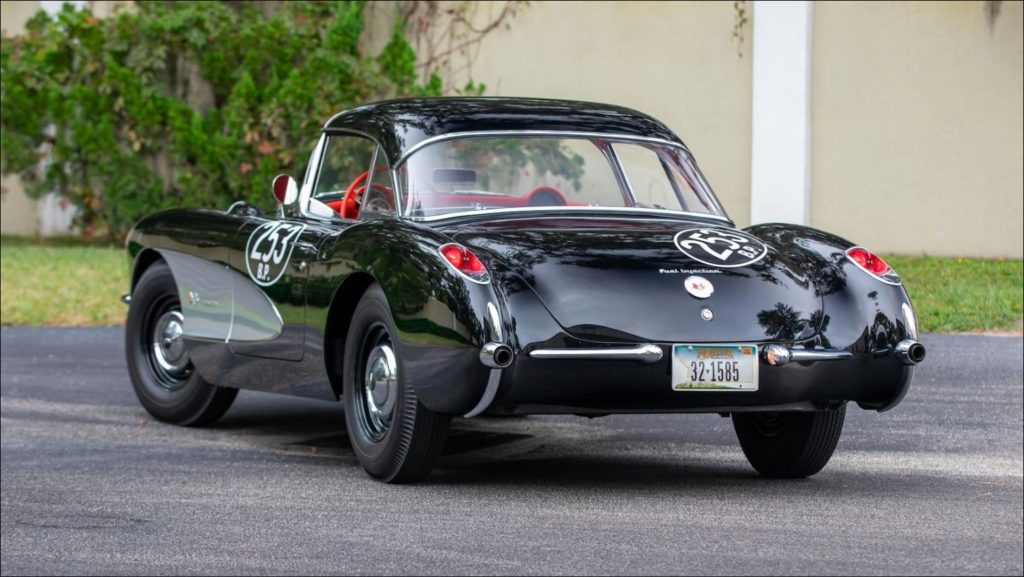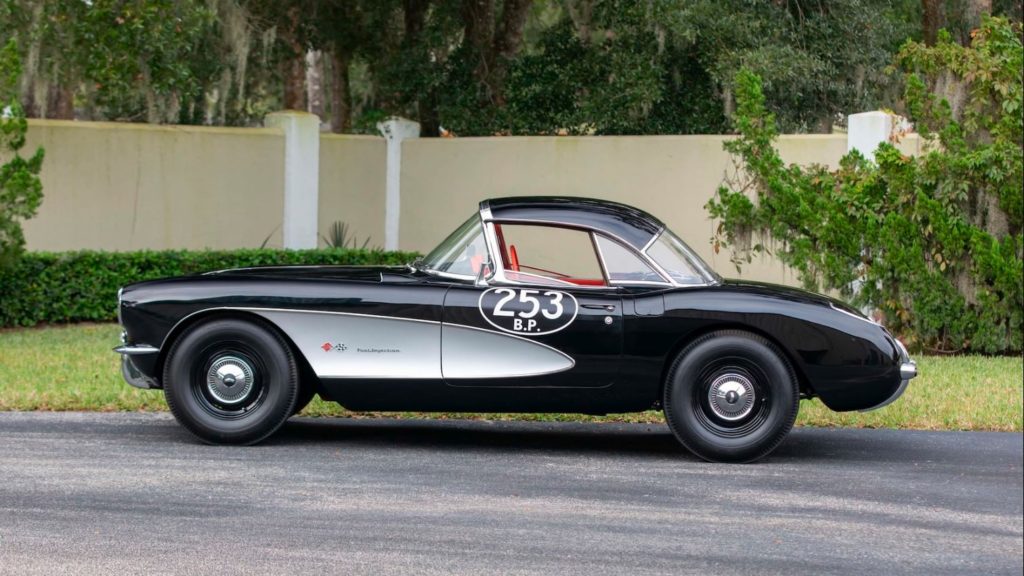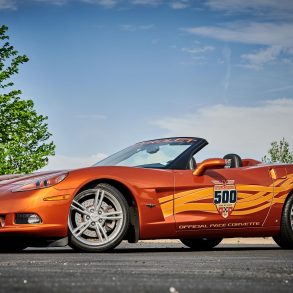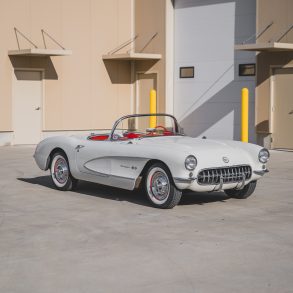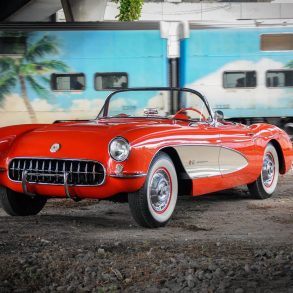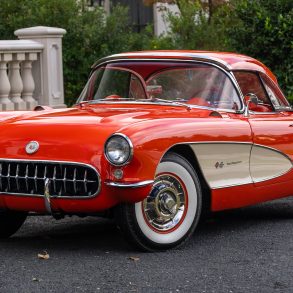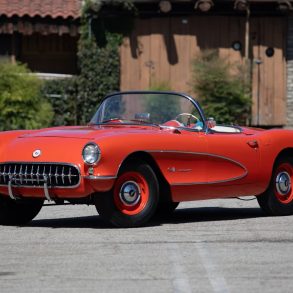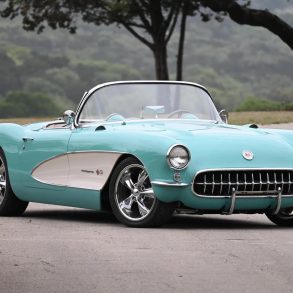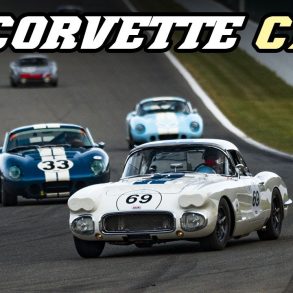1957 Airbox Corvette
Summary
The Airbox option package designated RPO 579D came with the Duntov-cammed, Rochester fuel-injected 283/283 HP V-8. It incorporated a fiberglass intake plenum on the drivers-side inner fender. Fed by an opening in the radiator bulkhead, it channeled cooler, denser outside air through an internal filter and along a rubberized duct to the Rochester fuel-injection unit for maximum output.
This racing-purposed system was available only with the new BorgWarner 4-speed manual transmission (the first 4-speed offered by Chevrolet), a steering-column-mounted AC tachometer driven by a cable from a specific Delco 908-series distributor, and radio/heater delete, which eliminated the need for ignition shielding beneath the hood and allowed the ignition wires to be more directly routed to the spark plugs.
The Details
Nineteen fifty-seven was a pivotal year for the Chevrolet Corvette. It was the first year for a four-speed transmission, while its Small Block V-8 grew to 283 cubic inches (4.6L) and offered mechanical fuel injection. Those “fuelie” models established a new performance benchmark by delivering one horsepower for each cubic inch of displacement.
It was also the first year Chevrolet offered options dedicated to enhancing the Corvette’s track capability. They included option 579E, known as the “airbox” package, and option 684, which was a heavy-duty suspension package commonly known as the “big brake” package. The airbox package featured a special sealed air intake system that drew cooler air from the front of the engine compartment. That denser, cooler air helped the fuelie 283 run stronger during long races.
Most of the 43 Airbox Corvettes were destined for competition which is why the RPO 684 Heavy Duty Racing Suspension package was so important. Referred to as the “Big Brake” option, it comprised a heavy-duty front coil and five-leaf rear springs, heavy-duty shocks, metallic linings inside finned brake drums, internal fans to draw air in through screened backing plates, a heavy-duty front stabilizer bar, fast steering adapter and “elephant ear” front brake scoops. The same under-hood ducting in the Airbox system was employed to channel cooling air to the rear brakes through tunnels in the rocker sills.
Only 43 1957 Corvette models were factory-equipped with the 579E airbox option.
1957 CORVETTE ‘AIRBOX’
- Wheelbase: 102 inches
- Curb weight: 2,849 pounds (base model)
- Engine: 283 cubic inches with mechanical fuel injection
- Bore x stroke: 3.875 x 3.000 inches
- Compression ratio: 10.5:1
- Horsepower: 283 @ 6,200 rpm (gross rating)
- Torque: 300 lb-ft @ 3,000 rpm (gross rating)
- Transmission: four-speed manual
- Rear axle: Positraction with 4.11 ratio
RPO 579E ‘AIRBOX’ OPTION
- 283 fuel-injected engine with unique cold-air intake system
- 8,000-rpm tachometer relocated to the steering column
- Heavy-duty right-side engine mount
- Heater and radio were mandatory deletions
- Revised spark plug wire routing without regular-production shielding
RPO 684 HEAVY-DUTY RACING SUSPENSION ‘BIG BRAKES’ OPTION
- Heavy-duty, higher-rate coil springs and shock absorbers in the front suspension
- Larger-diameter front stabilizer bar
- Additional leaf spring and heavy-duty shock absorbers in the rear suspension
- Quicker-ratio steering
- Finned cast iron brake drums with metallic linings
- Vented brake drum backing plates
- Brake-cooling air scoops and ducts
- 15 x 5-inch steel wheels


